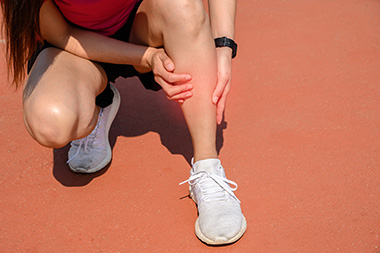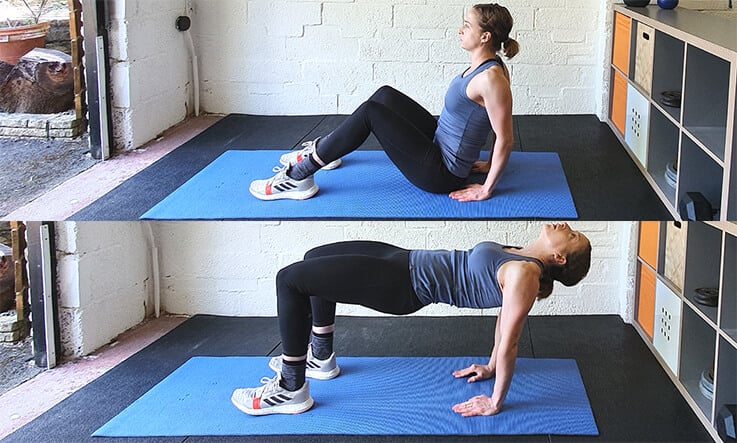Running Injuries: How To Avoid And Treat Shin Splints

It’s a daunting statistic, but 50% of runners contract injuries yearly. Running can cause you to injure your back, knees, feet, ankles, hips, and shins. If you are running regularly, pay attention to any small ache or pain, and follow it up with a doctor's appointment if the problem persists. With that being said, there are a number of precautions you can take to avoid injury. This article will focus on how you can avoid contracting one of the most common running injuries, shin splints (medial tibial stress syndrome) as well as how to treat them. Use the following tips and tricks to stay ahead of the game.
What are Shin Splints?
Running is a high impact exercise, which means doing the activity repeatedly can take its toll on your shins. “Shin splints”, is an all-inclusive term used to describe a sharp pain that travels up and down the shin. Experts believe that a significant and abrupt increase in a runner’s weekly intensity or distance can cause this type of injury.
For young runners, shin splints may occur due to small hairline stress fractures in the shin bone. For others, often the more mature runners, shin splint pain may be a result of the sheath surrounding the shin muscle becoming detached from the shin bone. This is also known as Medial Tibial Traction Periostitis.
Shin Splints: Causes and Prevention
Beyond simply running repeatedly, both types of shin splints can occur for a number of reasons. Improper running form can be a cause, not giving your body enough time to recover will also incite the injury.
Running on a sloped surface too often can also play a part in causing shin splints. As can running on a different surface than usual. You can also put yourself at risk for shin splints by wearing inadequate footwear as you run. In the case of stress fractures, despite their small stature, you may need at least 6 - 12 weeks rest to recover. You can take precautions before the stress fracture even occurs, the injury often comes with a warning sign a “hot spot”. Once you’re aware of it you can make the necessary adjustments to your workouts and prevent it from getting any worse. You will notice that the point the fracture is set to happen will feel tender, sore, and hot when you touch it.
At first sight, you will need to rest the shin with the hotspot and stop running for 2 - 4 weeks. After that, the area of the “hot spot” may have healed enough so that you can run again. In the case of muscular inflammation or the sheath becoming detached, you must also immediately rest your shins for at least 2 - 4 weeks. The only visual indication you may have is some mild swelling. During this time, you should care for them using ice. You can also massage your shins. Better yet, you can combine these methods, massage your shins with ice or frozen vegetables wrapped in cloth. Stop every so often to let your shins warm up and then repeat. By doing this you can reduce the inflammation that lies in this sore tissue, while also speeding up circulation for healing. This also allows the sheath to reattach itself to the bone.
In both cases, if you are determined to continue working out, you can also resort to non-impact aerobic activities. These activities could be exercises like swimming or yoga. After 2 - 4 weeks, you can step it up by doing a low impact cardio exercise. You could use a cross trainer, a walking pad or a rowing machine.
These are however more strenuous, so take care not to these before they’ve recovered enough to take the strain. Both types of shin splints are preventable by simply avoiding being reckless with your body. If you are doing a new routine, do it gradually so your body can acclimatise to the new demand. You must also stretch your shins regularly before you run. Shin splints can occur in both the anterior and posterior parts of your shin, so be sure to stretch both. The following stretches will see that both your anterior and posterior shins are stretched.

Seated calf stretch
Step #1: Sit down, stretch out one leg in front of you.
Step #2: Wrap a towel or resistance band around the ball of your foot. Pull your toes up towards your shin till you can feel a stretch in your calf.
Step #3: Maintain that position for 20 - 30 seconds, you should feel your posterior shins stretching significantly when you do this. Do this stretch three times on each leg before running.
Upwards Facing Dog
Step #1: Lay down on your stomach.
Step #2: Point your toes outwards so that the tops of your feet are facing the floor.
Step #3: Press up from the floor with your hands and you should feel a stretch in your anterior shins. Do this for 20 seconds. Aim to do this stretch at least three times before you run.
Shin Splints treatment
By taking these precautions, you can reduce the risk of shin splints significantly. But, on the occasion where it’s too late and you are already suffering from shin splints, you need to focus on treatment.
If the pain is caused by the shin muscle becoming detached from the bone, then bedrest, ice and nonsteroidal anti-inflammatory painkillers are recommended. A study by Dr Kathleen Carr found that rest and ice alone encourages faster recovery than when it’s combined with nonsteroidal anti-inflammatory painkillers. So, if you want to return to running quickly do not combine such methods.
Another suggestion to combat shin splints is to be prescribed orthotics insoles. A study by Dr Daniel. P. Slawski focused on 16 cross country runners who were prescribed orthotics to treat their shin splints. Out of the 16, there were 14 (88%) who reported either improvement or relief to their symptoms. For more information, ask your local GP.







